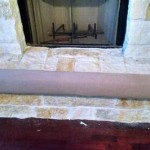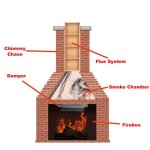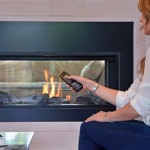Gas and Electric Fireplaces: A Comprehensive Overview
Fireplaces have long been regarded as a central feature in homes, offering both warmth and aesthetic appeal. In contemporary times, gas and electric fireplaces have emerged as popular alternatives to traditional wood-burning models, offering distinct advantages in terms of convenience, efficiency, and environmental impact. This article will explore the key characteristics, benefits, and considerations associated with gas and electric fireplaces, providing a comprehensive understanding of these heating options.
Gas Fireplaces: Functionality and Features
Gas fireplaces operate by burning natural gas or propane to generate heat. They typically feature a system of ceramic logs or decorative elements that are designed to mimic the appearance of a real wood fire. The flames are controlled by a valve, allowing users to adjust the heat output. Gas fireplaces can be installed in various configurations, including direct-vent, vent-free, and B-vent models, each with its own set of installation requirements and venting characteristics.
Direct-vent gas fireplaces are considered the most efficient and safest option. They draw combustion air from outside the home and exhaust combustion byproducts directly outside, preventing the introduction of harmful fumes into the living space. Vent-free gas fireplaces, on the other hand, don't require a chimney or venting system, making them easier to install in existing homes. However, they release combustion byproducts into the room, necessitating proper ventilation and carbon monoxide detection. B-vent gas fireplaces use existing chimneys to vent combustion gases, but are less efficient than direct-vent models.
The heat output of a gas fireplace is measured in British Thermal Units (BTUs). A higher BTU rating indicates a greater heat output. The appropriate BTU rating for a gas fireplace depends on the size of the room it is intended to heat and the desired level of warmth. Gas fireplaces can be controlled manually, with a remote control, or through a thermostat, allowing for precise temperature regulation. Some models also offer features such as programmable timers and automatic shut-off functions for added convenience and safety.
One of the key advantages of gas fireplaces is their ability to provide instant heat. Unlike wood-burning fireplaces, which require time for the fire to build, gas fireplaces can be turned on and off with the touch of a button. This makes them a convenient option for supplemental heating during colder months. Gas fireplaces are also generally cleaner than wood-burning fireplaces, producing less soot and ash. This reduces the need for frequent cleaning and maintenance.
Installation of a gas fireplace typically requires professional installation, especially for direct-vent models that involve venting to the exterior. A qualified technician can ensure that the fireplace is installed safely and in accordance with local building codes. The ongoing cost of operating a gas fireplace depends on the price of natural gas or propane and the frequency of use. Proper maintenance for gas fireplaces includes annual inspections to ensure the venting system is clear and that the gas components are functioning correctly.
Electric Fireplaces: Simplicity and Versatility
Electric fireplaces operate by using electricity to generate heat. They typically consist of a heating element and a display that simulates the appearance of flames. Unlike gas fireplaces, electric fireplaces do not require venting, making them a versatile option for installation in almost any room. They can be plugged into a standard electrical outlet or hardwired for a more permanent installation.
Electric fireplaces are available in a wide range of styles and designs, including freestanding models, wall-mounted units, and insert models that can be installed in existing fireplace openings. The flame effects can be created using various technologies, such as LED lighting and holographic projections. Many electric fireplaces offer adjustable flame settings, allowing users to customize the appearance of the flames to their liking.
The heat output of an electric fireplace is measured in watts or BTUs. Most electric fireplaces offer multiple heat settings, allowing users to adjust the heat output to suit their needs. Some models also feature a thermostat for precise temperature control. Electric fireplaces typically include a fan to circulate the warm air throughout the room.
One of the key advantages of electric fireplaces is their ease of installation. Because they do not require venting, they can be installed in virtually any room with an electrical outlet. This makes them a convenient option for apartments, condominiums, and other dwellings where venting is not possible. Electric fireplaces are also very safe to operate, as they do not produce any flames or combustion byproducts. This eliminates the risk of carbon monoxide poisoning and reduces the risk of fire.
Electric fireplaces are generally more energy-efficient than gas fireplaces, as they convert nearly 100% of the electricity they consume into heat. This can result in lower operating costs, especially in areas with relatively inexpensive electricity. The visual appeal of electric fireplaces can vary greatly. While some models offer realistic-looking flame effects, others may appear artificial. It's important to consider the quality of the flame effect when selecting an electric fireplace.
The lifespan of an electric fireplace can vary depending on the quality of the components and the frequency of use. However, with proper maintenance, most electric fireplaces can last for many years. Maintenance typically involves keeping the unit clean and dust-free. It's also important to check the heating element and fan periodically to ensure they are functioning properly.
Key Considerations When Choosing Between Gas and Electric Fireplaces
When deciding between a gas and an electric fireplace, several factors should be taken into account. These include the desired level of heat output, the installation requirements, the operating costs, and the aesthetic preferences.
For those seeking a significant source of heat, gas fireplaces are generally a more powerful option. They can produce a substantial amount of heat, making them suitable for heating larger rooms or even entire homes. Electric fireplaces, on the other hand, are typically better suited for supplemental heating in smaller spaces.
Installation requirements can also play a significant role in the decision-making process. Gas fireplaces require venting, which can add to the cost and complexity of installation. Electric fireplaces, on the other hand, can be installed almost anywhere with an electrical outlet, making them a more convenient option for many homeowners.
Operating costs are another important consideration. Gas fireplaces require a supply of natural gas or propane, which can be variable in price. Electric fireplaces consume electricity, which is also subject to price fluctuations. It's important to compare the energy costs in a specific location to determine which type of fireplace will be more economical to operate.
Aesthetic preferences are also a key factor. Gas fireplaces typically offer a more realistic-looking flame than electric fireplaces. However, electric fireplaces are available in a wider range of styles and designs, allowing homeowners to choose a model that complements their decor. The type of flame display and presence or absence of realistic embers should be considered.
Safety is paramount. Gas fireplaces present the potential for gas leaks and carbon monoxide poisoning if not properly installed and maintained. Electric fireplaces eliminate these risks, making them a safer option, particularly for households with children or pets. Both types should be inspected and maintained as per manufacturer instructions.
Finally, long-term maintenance should be considered. Gas fireplaces require professional inspection and cleaning to ensure proper venting and prevent gas leaks. Electric fireplaces require minimal maintenance, typically just dusting and occasional component checks. The ease and cost of maintenance should factor into the ultimate decision.

Gas Vs Electric Fireplaces Montigo

Gas Fireplaces Vs Electric Bowden S Fireside

Advantages Of Gas Vs Electric Fireplaces

Fireplace Usage Cost Calculator

Electric Fireplace Modern Flames

Gas Vs Electric Fireplace

Should I Buy A Gas Or Electric Fireplace What Is The Difference

ᑕ❶ᑐ Gas Or Electric Fireplace Which Is Better For You

Convert A Gas Or Wood Fireplace To An Electric
Gas Wood Pellet Electric Which Fireplace Or Stove Is Right For You Marshall S Inc
Related Posts








